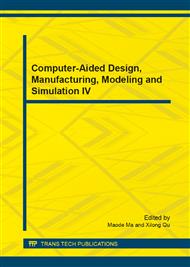p.449
p.454
p.459
p.468
p.473
p.478
p.484
p.489
p.494
Moving Target Recognition and Tracking Techniques Based on Infrared Image
Abstract:
Infrared equipment has good concealment, strong anti-interference ability, far operating range and fast search speed. These features make it more and more used in military or civilian fields. This paper aims to realize the moving target recognition and tracking system based on Infrared scanning image. According to the actual situation, choose a combination method of Butterworth filter and Median filter as the image preprocessing algorithm, selected the segmentation algorithm based on the target local energy for continuous multi frames, and using Kalman tracking algorithm with our orientation algorithm to track the target, get the target specific position. Using GDI in VC++ to establish Radar Scanning polar coordinate system, show the target trajectory in the coordinate system.
Info:
Periodical:
Pages:
473-477
Citation:
Online since:
October 2014
Authors:
Keywords:
Price:
Сopyright:
© 2014 Trans Tech Publications Ltd. All Rights Reserved
Share:
Citation:


